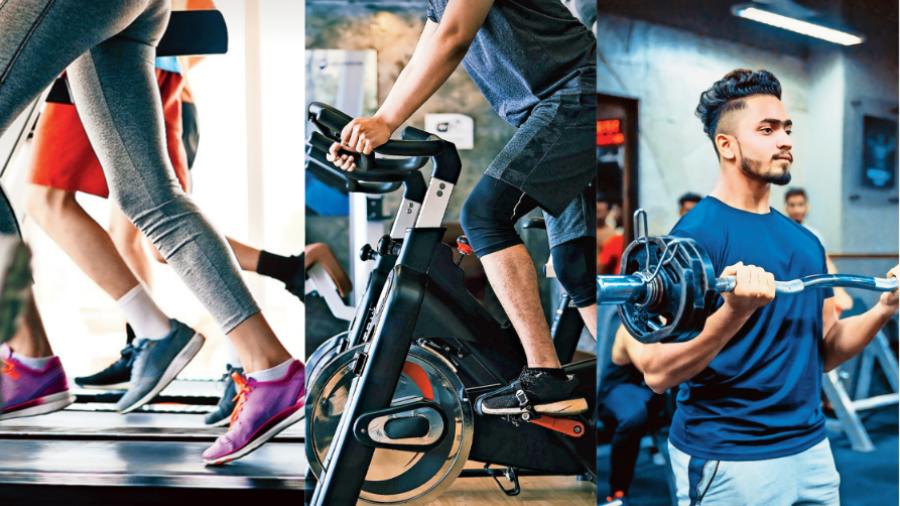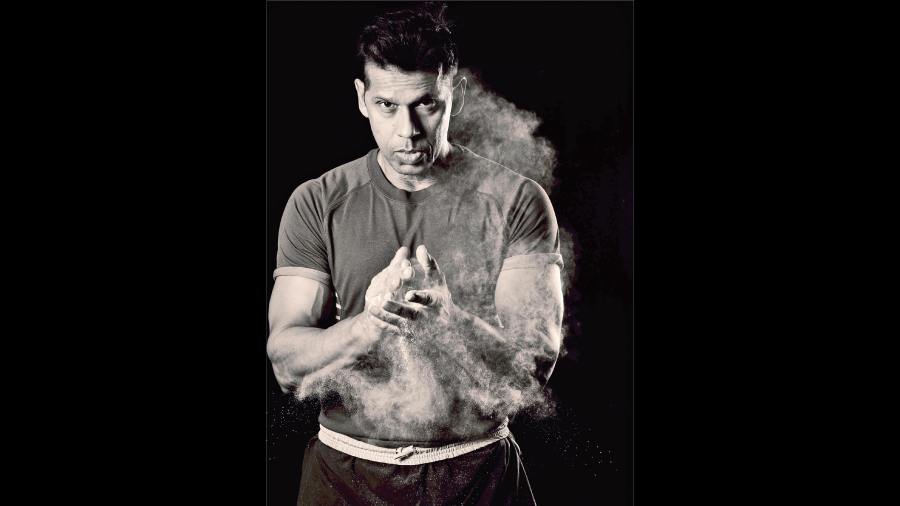Interval training, circuit training and the likes have been an essential and integral form of training in an athlete’s workout regimen. Owing to its character of high-intensity movements in a short period of time, it has proven to aid athletes in their performances as this mimics the very nature of a sport which is typically played for a short period of time, demanding strenuous participation of the players involved.
This form of training has been appreciated widely by avid fitness enthusiasts and health experts as well. Circuit training is being recommended by doctors for general health and to attain peak oxygen consumption, as it largely benefits the cardiovascular system and strengthens the muscles, ligaments, tendons, cartilages and soft tissues. It provides the best of two ideologies of training — cardiovascular training and strength, conditioning and functional training.
High-Intensity Interval Training (HIIT) is a form of a series of workout combined together that are required to be executed in the most sophisticated and efficient manner. “My games are for 45-60 minutes long. During the entire period I am required to be in my best physical form as it gets very strenuous and as all games, is very demanding and exhausting. Circuit training, especially done with weights, has really improved my agility and endurance ability. Also, I am mentally more alert as HIIT requires mind-body connection. It’s hard to perform lunges with a weight and not be focused. I most certainly recommend HIIT,” says squash champion Ramit Tandon.
Typically, it comprises a series of exercises to be performed at high intensity alternated with a short period of rest or a relatively low-intensity exercise.
An example of a HIIT maybe skipping for 30 seconds followed by a 10-second rest period; the next 30 seconds maybe squats followed by a rest period of 10 seconds; the following 30 seconds of squats following suit.
The exercises can be executed for 10 sets or a number as suitable. It must be noted that the 30 seconds (in the above example) of work period must be intense, either by high repetition or by carrying a resistance, that is, weights, permitting one to last the said 30 seconds which leads to 80 per cent of the maximum heart rate.
Bear in mind that the intended intensity is purely subjective. Hence, it is widely suggested to achieve 70-80 per cent of maximum heart rate during the activity phase as opposed to stating the number of the intended heart rate. It is due to this reason that circuit training caters to all levels — beginners, intermediaries, advanced athletes. Performing body weight lunges alternated with bicep curls with a resistance loop band can prove to be as challenging to a novice as performing moderately heavy lunges alternated with moderately heavy bicep curls with the aid of weights.
Can be done by those with a busy schedule
The main principle of HIIT training is to accomplish more quality work by alternating periods of activity and recovery, as opposed to continuous training, by simply making the work period more potent, that is, more intense. It is most ideal to increase intensity by loading the muscles as opposed to a mere cardiovascular exercise such as spot jogging, running on the treadmill and the like.
An absolute and prolonged cardiovascular exercise merely leads to intense perspiration and breathlessness without building on the intended strength. The purpose of any physical activity is primarily to be efficient and strong.
This can be achieved by adopting strength, conditioning and functional workout programme. It is beyond dispute that cardiovascular exercises largely benefit the cardiovascular system and such can be attained by doing cardio regimens twice a week. However, in the absence of muscle loading, the purpose of getting healthy and fit is defeated. It therefore can be concluded that involving functional exercises with resistance and performing such in a circuit is a holistic approach towards one’s workout.

Circuit training has the innate ability to mould the workout programme to be sophisticated and intense, alleviating profuse loss of salts and minerals as in the case of a prolonged continuous training programme.
Circuit training ideally lasts for 30-40 minutes. Owing to its intended intensity, the programme is such that one fails to exercise beyond 40 minutes.
Should one be of the opinion that they are able to work out an hour’s session of HIIT, it is highly likely that they are faltering on the intensity and as such adopting a regular continuous training program and not the circuit training.
Due to its requirement for a low time commitment, HIIT is a programme that can be done by those with a busy schedule. Research has proved that one can progress in as little as 15 minutes of HIIT (performed two-three times a week) than running on the treadmill daily for an hour. Study done in 2011 by The American College of Sports Medicine for their annual meeting, declared that just two weeks of high-intensity intervals improve aerobic capacity as much as six-eight weeks of cardiovascular training.
During workout, lactic acid builds up in the body, which causes one to feel sore and fatigued. It is essential for athletes to build a tolerance to the lactic acid build-up as to sustain the game. The same is true for one during workouts.
HIIT provides the complete advantage of cardiovascular as well as strength, conditioning and functional training programme; as a result by executing short bursts of energy in a short period of time significantly improves athletic performance and general well-being by aiding one to sustain longer in a game and build a higher tolerance to the lactic acid by diminishing the build-up.
HIIT trains one to be their best self, enabling one to last longer periods of exhaustion without feeling the bitterness of fatigue. An athlete playing a strenuous session of a game, a coach training various clients throughout the day, a doctor having to consult myriad patients, HIIT trains individuals to sustain for longer periods in the most efficient manner possible. This is primarily due to the fact that HIIT demands one to exert themselves to an extent of great intensity. With practice one improves and is even able to get through their day without the thorns of exhaustion.
HIIT, owing to its nature, helps in detoxification of the body as the body works as one unit. Aerobic exercises or an absolute cardio regimen follows the principle of oxygen circulation through the blood and is primarily associated with an increased rate of breathing.
Intense exercise will help burn more fat
Treadmill running, cycling and the like are all aerobic exercises. Anaerobic exercises comprise brief and intense bursts of physical activity, such as weightlifting, which is fuelled by energy stored in the muscles through a process known as glycolysis.
This is a more sophisticated form of energy utilisation which does not take place when doing absolute cardio. HIIT is predominantly anaerobic. It utilises energy in a phenomenon known as Excess Post-Exercise Oxygen Consumption (EPOC) where the body continues to better allocate energy even after workout and transmit oxygen cells through the body. In simpler terms, imbibing Circuit Training as the workout programme of the day, the nature of the training method helps the body to burn fat even after the workout. Due to a more optimal burning of calories the digestive system is cleansed of all built-up toxins and in turn greatly helps in detoxification and aids in fat loss.
“The after-burn effect is referred to as Excess Post-Exercise Oxygen Consumption (EPOC) and is the reason why intense exercise will help burn more fat and calories than regular aerobic and steady-state workouts,” says Eric Salvador, head instructor at The Fhitting Room in New York.
According to Chris Shaw, research fellow at Institute of Sport, Exercise & Active Living, Victoria University, traditional forms of exercises are made up of continuous form of workload where one trains at a steady state but at a moderate intensity, allowing one to work out for an hour. This is effective and is recommended, however, only for a couple of days of the week.
HIIT is high-intensity exercises of short intervals interspersed with periods of recovery and rest. This method of training has a lot of benefits in controlling one’s blood glucose, cholesterol and lipid levels, aids optimal functioning of all the organs, improves muscle and joint mobility, despite requiring lower commitment of time.
It can be concluded that interval training and circuit training that largely comprises anaerobic exercises and aerobic exercises (for beginners) has the potential to larger benefit the general populations’ health and overall well being.

Anwar Wahhab is a metabolic analytic practitioner and strength and conditioning coach
